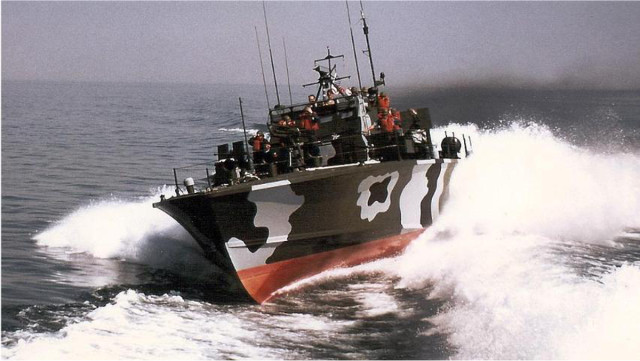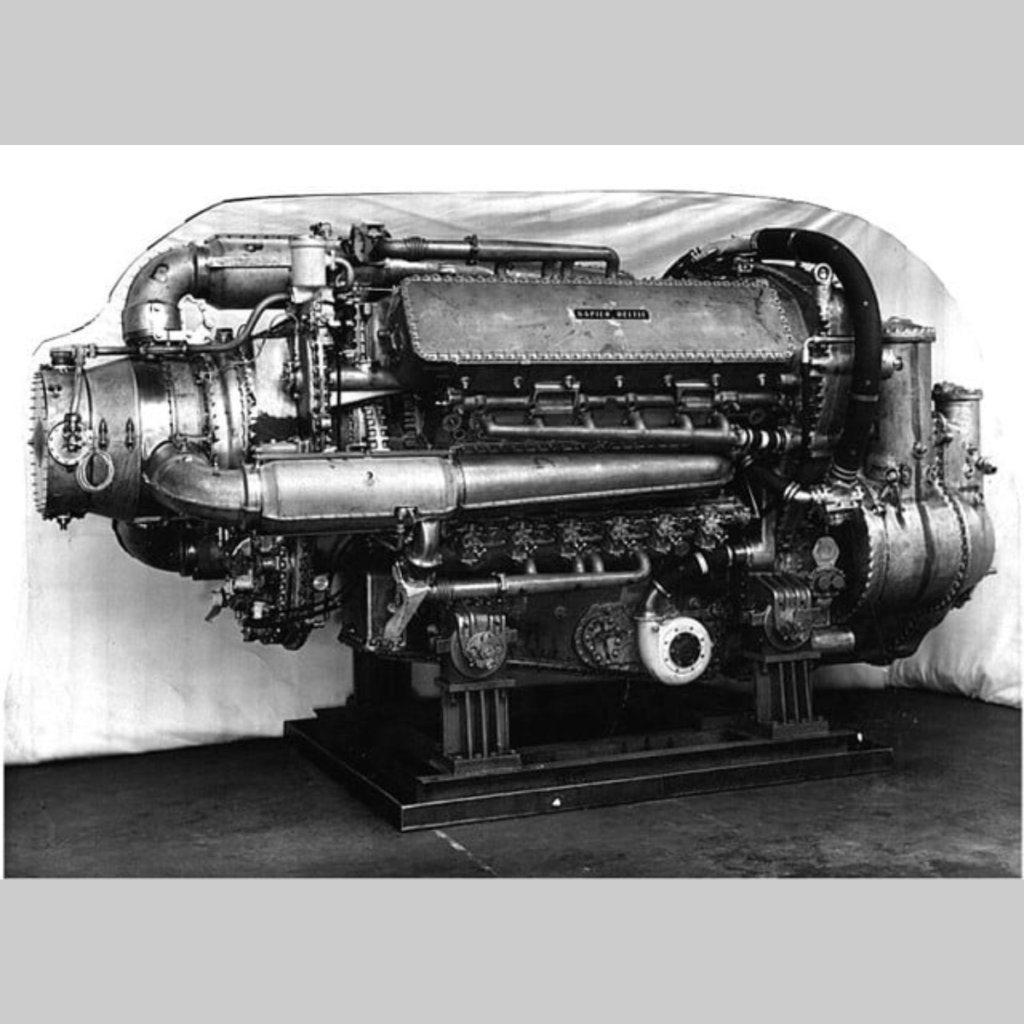
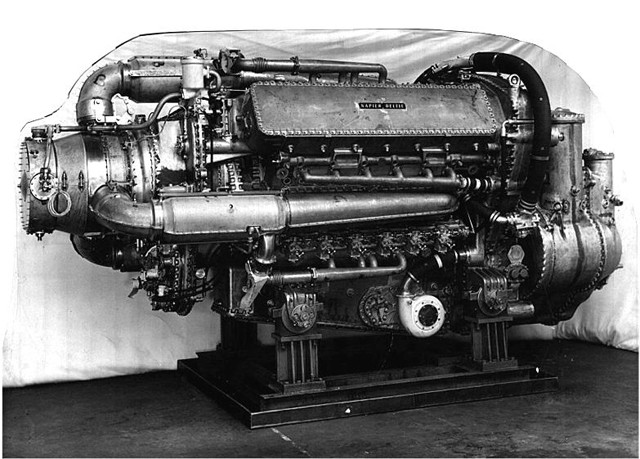
Deltic? What’s a Deltic diesel engine? If you’re scratching your head in wonder, then you’re not alone. Most diesel truck fans have likely never heard of it. But if you’re familiar with British naval or rail power, then the Deltic engine is an old friend. So what is it? The Deltic is one of the most significant diesel engines of its age, and was developed at a time when the entire world was at war.
Developed under great pressure due to the British struggle to throw back the German armed forces advancing upon their native shores, the Deltic diesel engine was first conceived as project under the British Admiralty in 1944. They wanted a high-performance, but lightweight diesel engine that could be used in the Motor Torpedo Boats of the Royal Navy.
At that point in time, the Royal Navy’s Motor Torpedo Boats were powered by petrol (gasoline) engines, and that made them extremely vulnerable to fires and explosions. The German E-Boats were powered by diesels, which gave them a great advantage over the British Motor Torpedo Boats. Although not finished until after the end of World War II, the development efforts to create a new and more powerful type of diesel engine produced the first of several Deltic prototypes by 1947.
The Deltic (after the Greek letter Delta) diesel was a supercharged, two-stroke, opposed-piston engine with no valves. The engine block was arranged in a triangle of cylinder banks forming the sides. Each apex of the three connected cylinder banks was connected by a crankshaft. The crankshafts were linked by phasing gears, so they could send power to a single output shaft. Built in this three-sided configuration, the Deltic diesel featured six banks of pistons working the three crankshafts.
Imagine it as three V-shaped engines tied together at their crankshafts and each cylinder block merging with another cylinder half-way through the combustion chambers. The genius of the Deltic diesel engine was that it could be produced in a variety of cylinder numbers. The most common were nine and 18 cylinders arranged in three and six banks of cylinders, respectively. Below is a video that offers an animation of the Deltic diesel engine’s inner workings.
One of the biggest challenges in designing the Deltic diesel was getting the pistons to move in the correct order. Eventually, after much study, Herbert Penwarden, who was a senior draftsmen with the Admiralty figured out that the best way to accomplish this was to have one of the three crankshafts revolving in an anti-clockwise direction so that the piston-phasing would be correct. The gearing was redesigned to so that one of the crankshafts rotated in the opposite direction of the other two crankshafts. The video below provides an illustration of the Deltic’s crankshafts and pistons in action.
A unique feature of the Deltic engine was its “uniflow” design. It’s called uniflow because due to the manner in which the crankshaft-phasing was designed, it allowed for exhaust port lead and inlet port lag. This made the flow of gas into and out of the cylinder move in a single direction. This flow of gas was helped along through a supercharger, which delivered better cylinder exhaust scavenging.
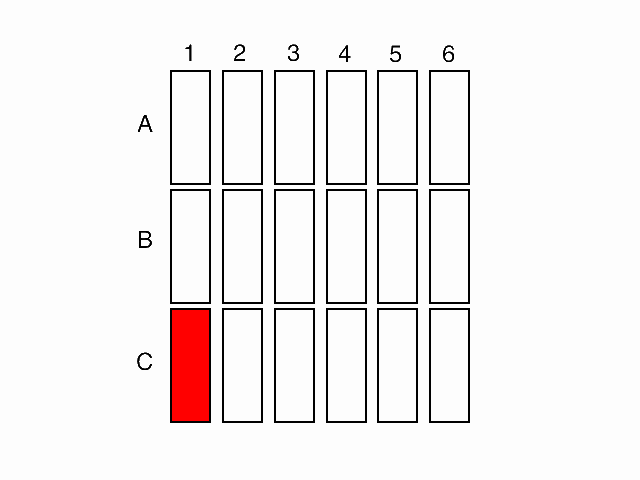
The firing order of the Deltic 18-cylinder engine is replicated (A to C are cylinder banks; 1 to 6 are pistons in each bank) in this Graphics Interchange Format (GIF) illustration. (Click to see.)
Because the Deltic was an opposed-piston design engine, the engine had no intake or exhaust valves, so there was no way to modify its port positions. In each of the cylinder banks an “inlet” piston was used to open and close the inlet port, and an “exhaust” piston in the adjacent cylinder opened and closed the exhaust port. Originally, that design made the firing to be 60-degrees apart in each bank of pistons.
The system was redesigned to time each cylinder’s exhaust piston to lead its inlet piston by 20 degrees of crankshaft position. That change allowed the exhaust port to be opened well before the inlet port, and the inlet port to be closed after the exhaust port. This created better exhaust gas scavenging, as well as improved volumetric efficiency for the fresh air charge.
By altering the engine design this way, the firing of adjacent cylinders was now 40 degrees apart. In the case of the 18-cylinder Deltic, the firing could now be ordered in an interlacing pattern across all six of the engine’s cylinder banks. Now the engine produced an even buzzing exhaust note, a charge ignition every 20 degrees of crankshaft revolution, and a lack of torsional vibration. This was ideal for its application in the small naval vessels it was designed for. One of those, a PTF Boat used in Vietnam, can be seen in the video below.
The opposite rotational direction was designed into nine-cylinder Deltic engine design. This made the exhaust lead of 20 degrees to be added to the 60 degrees between the cylinder banks. That meant that the firing of adjacent cylinders in the same bank was 80 degrees apart. Despite this difference in design and operation, the engineers were still able to get that uniform buzzing exhaust sound and reduced torsional vibration of the 18 cylinder in the nine-cylinder Deltic, by meshing the firing order over all three banks of cylinders, and having the charge ignition occur in 40-degree intervals of crankshaft revolution.
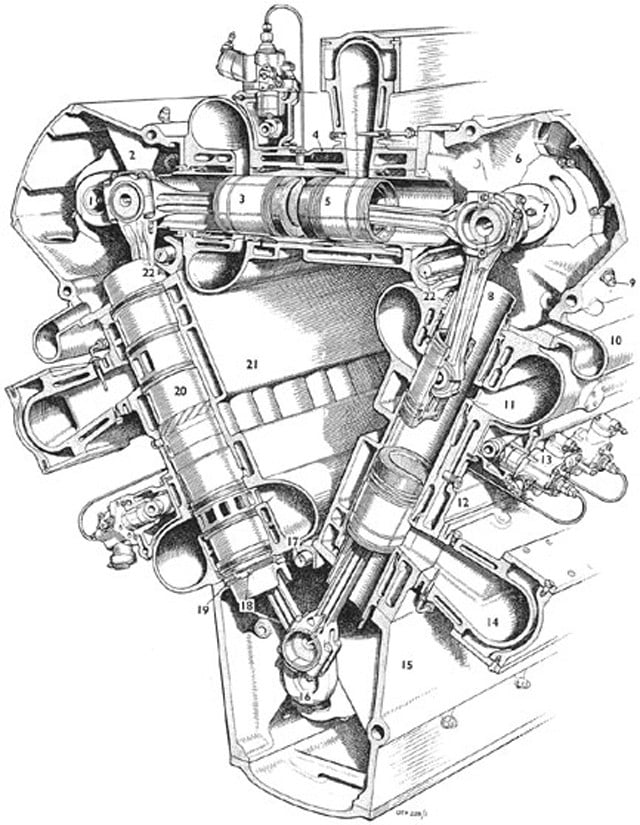
This cutaway illustration of the Napier Deltic diesel engine shows the triangular arrangement of the piston banks and the opposed-piston design.
A set of final, working Deltic engines were ready for full testing by 1952. Ironically, the test bed for the first endurance trials was a German E-Boat that had been captured during the war. The E-Boats were powered by three Mercedes-Benz diesel engines, and because the Mercedes-Benz engines produced about the same power as the Deltics, it made a perfect test mule for comparison purposes.
Two out of the three German-built diesel engine were replaced with 18-cylinder Napier Deltic diesels. The compact size of the Deltic design became immediately obvious to everyone when viewed next to single Mercedes-Benz diesel remaining in the E-Boat. The Deltic diesels were half the size of the German diesel, and weighed one-fifth as much, while putting out an equivalent amount of power.
The specifications for the 18-cylinder Deltic diesel engines are interesting, to say the least. They had a bore of 5.125 inches, and each piston stroke was a lengthy 7.25 inches. With a total displacement of 5,384 inches or 88.3 liters (that’s about 13 times the size of a Cummins 6.7), the 18-cylinder Deltic has a compression ratio of 19.26:1, and produces 2,500 hp at 2,000 rpm. It measures 6 feet, 2.5 inches in width, is 7 feet, 1 inch tall, and has an overall length of 10 feet, 11 inches. The dry weight of the Deltic 18-cylinder comes in at 8,727 pounds. That’s a whopper!
Needless to say, the Deltic was a huge success, and went on to become a standard powerplant in the Royal Navy’s compact and swift vessels. Deltic engines were also used in British rail locomotives as well. During the 1960s, twin D18-25 Series II Type V (18-cylinder) Deltics powered the Class 55 locomotives, and the smaller T9-29 (nine-cylinder) Deltics found homes in Class 23 locomotives. Watch the video above to see more of the rail-purposed Deltics.
So successful were the Deltic diesels, that they also found a home in Motor Torpedo Boats and Patrol Boats in a number of other country’s naval fleets. Nations such as Greece, the United States, and again ironically, Germany purchased Deltic-powered Tjeld or Nasty class vessels of Norwegian origin. Notably, the United States used Deltic-powered Nasty class boats for covert operations (the Deltic’s gentle hum making it ideal for this purpose) in the Vietnam theater of operations.
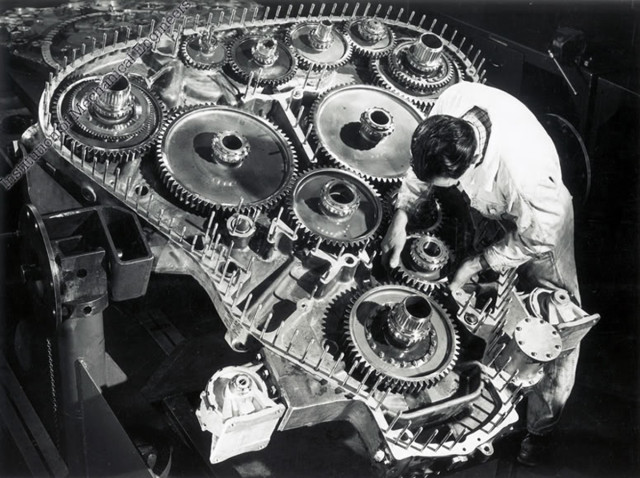
The technician working on the gear case from the rear of a Deltic provides a dramatic illustration of the engine’s size.
While the Deltic diesel engines (either the 18- or 9-cylinder versions) were far too large and heavy to ever be used in a light truck application, imagine if this technology was re-visited, and miniaturized (in a fashion) to fit into a modern pickup truck. It could potentially revolutionize the diesel truck and car market by bringing a compact high-power engine onto the scene that would fit well into smaller, lightweight vehicles.
We hope you enjoyed learning all about the Napier Deltic diesel engine. Please let us know what other engine types and designs you would like more information about, and then stay tuned for the next installment of our historic engine series.
